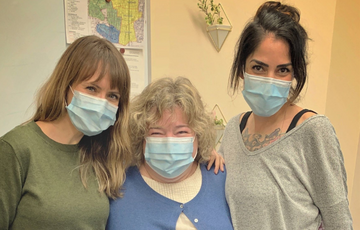Safe drinking water is essential for good health and the wellbeing of communities. Ingesting lead can be harmful to human health, especially for young children and infants as they adsorb lead more easily than adults and are more susceptible to its harmful effects.
Ensuring low lead levels in drinking water is a shared responsibility between water suppliers, municipal governments, private property owners and health authorities.
If you have concerns about lead levels in your drinking water, first contact your local water supplier. Sampling for lead in the pipes and fixtures contained within private properties or services lines is the responsibility of the homeowner. If you are renting a home, please connect with the property owner to discuss sampling.
Find a lab approved for drinking water microbiology testing. Check that the lab provides lead testing services.
Health Canada recommends that the Maximum Acceptable Concentration (MAC) of Lead in drinking water be 0.005 parts per million (ppm) or 5 parts per billion (ppb).
Island Health’s Environmental Health Officers (EHOs) are available to help interpret the water quality results and provide recommendations. Contact your local Environmental Public Health Office for more information.




